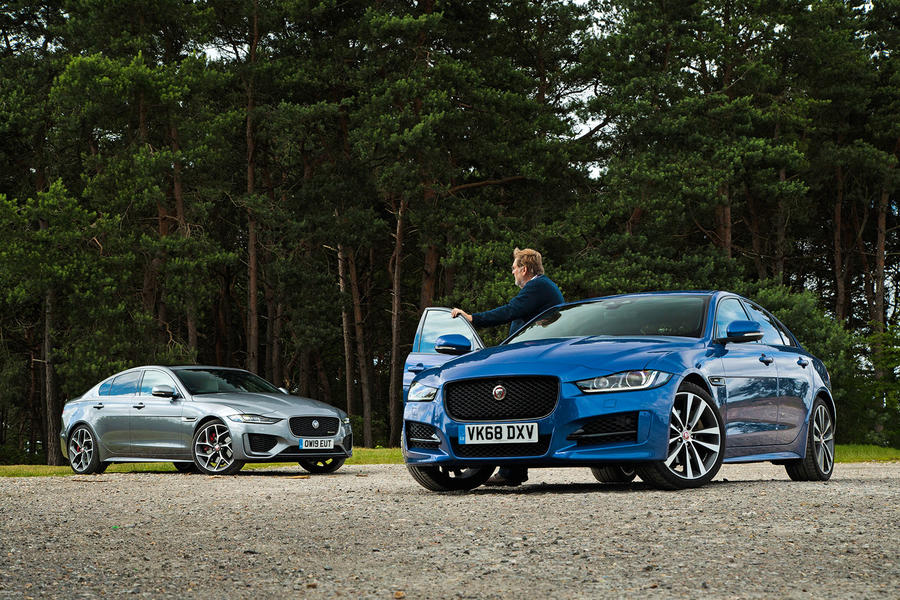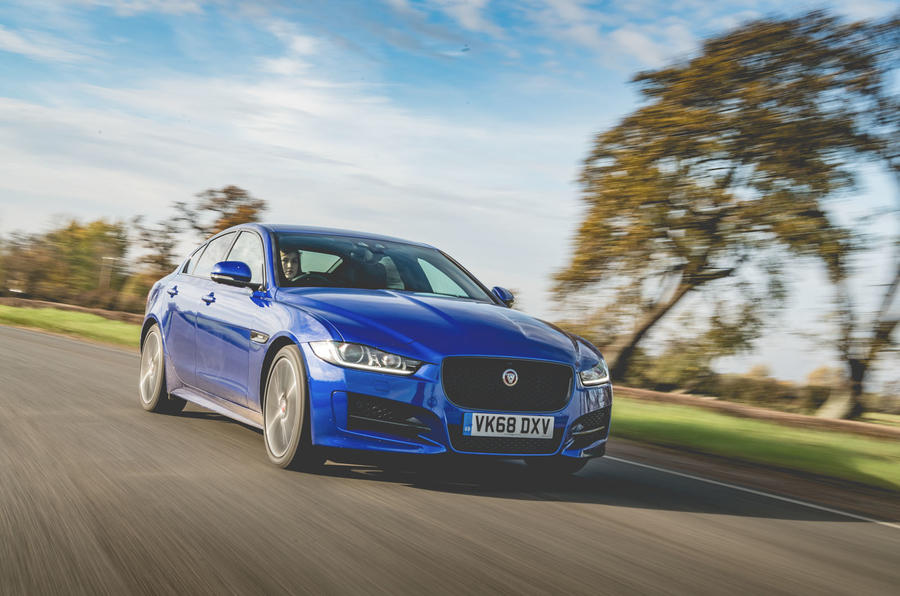Why we ran it: To evaluate Jaguar’s under-appreciated entry saloon and discover whether some of the UK’s BMW 3 Series and Audi A4 buyers need to think a little deeper
Month 4 - Month 3 - Month 2 - Month 1 - Prices and Specs

Life with a Jaguar XE: Month 4
Quality time spent in an original XE and a facelifted version has let us get under the skin of Jaguar’s compact exec saloon - 31st July 2019
It was always an odd idea, running an original-spec Jaguar XE R-Sport on long-term test when the mid-life refresh was just around the corner. We did it for a couple of reasons.
The XE is a car we’ve always liked but hadn’t written much about. And given that the mid-cycle revision was close, we reckoned it’d be interesting to see how our criticisms of the original XE matched the changes Jaguar had cooked up for the model’s second life. We arranged to borrow a new-spec XE to run alongside our trusty blue 68-plater for its last month in our care.
First things first: nobody denies that the original XE has been a decent but somewhat disappointing car. It is well proportioned and sporty. Its suspension design is sophisticated, combining sure handling with impressive refinement. It drives nicely, but original models look drab outside, with an absence of exterior impact, and have a fascia layout that is nothing special. The XE situation has been further complicated by a worldwide decline in demand for compact premium saloons, just at the moment Jaguar was setting out to challenge the Audi A4, Mercedes-Benz C-Class and BMW 3 Series. The upshot has been sales that have never looked like reaching their target.
Yet my own experience with the original R-Sport – in which I amassed most of the car’s quick and easy 9000 miles in what seems a flash – has been almost entirely positive. The XE has turned out to be one of those cars you quickly grab when there’s a job to be done, because it’s fast enough, convenient enough, economical enough, compact enough and easy to park. Aside from drabness, for us the car has two major faults: road noise and ride.























































Join the debate
Add your comment
XE Satisfaction
I bought my XE Sport D before it was on the market in 2015. It's been great. A few niggles, though, some bad blind spots. I'm little & fat with short legs so the seat has to fully raised till its headrest hits the roof-- oh yes, it does ! -- then with the seat tilted back so as the steering wheel is not up against my chest, and it's comfortable like that. It's not 'tarted up' with add-ons, just functional ones like a spare wheel. That saved me having to buy a new tyre after a puncture, not pumping that gunge into it when flat.
But, where do these fuel consumption figures come from ? I drive some 250 miles to the south coast regularly and have no problem getting to the upper 60mpg. on the trips (had over 70mpg. on occasion) and the mid 30's locally. Fuel consumption and no road tax were definitely the main reasons why I bought the car.
And as to the type wear, I've done 28K now (mine is all please motoring + shopping) and I expect to get at least another 10K out of them.
As to the new XE, does anyone know why the published mpg's are about 20% lower and the emissions 20% higher meaning it falls into paying a road fund licence fee for a car which is basically the same as the old model ?
suspension
when I was looking at various xe's before getting a 20t RSport I was told the sport suspension was deleted on the 4 wheel drive versions as i noticed on 18 inch wheels there was a bit more air under the wheel arches. I have 18 inch standard wheels and have no issues with ride or road noise on pirelli P7, all of the 19 inch wheeled cars I test drove were a bit more frenetic over un even surfaces even with non sport suspension. I also noticed the 19 inch wheeled nearly new cars all had Dunlop sport tyres which I have found noisy on previous car and scary in the wet.
ride
Perhaps in the new XE they have ditched the R-Sport suspension set up and fitted all models with the SE/Prestige/Portfolio set up. I drive a Prestige and the handling and ride are both great.